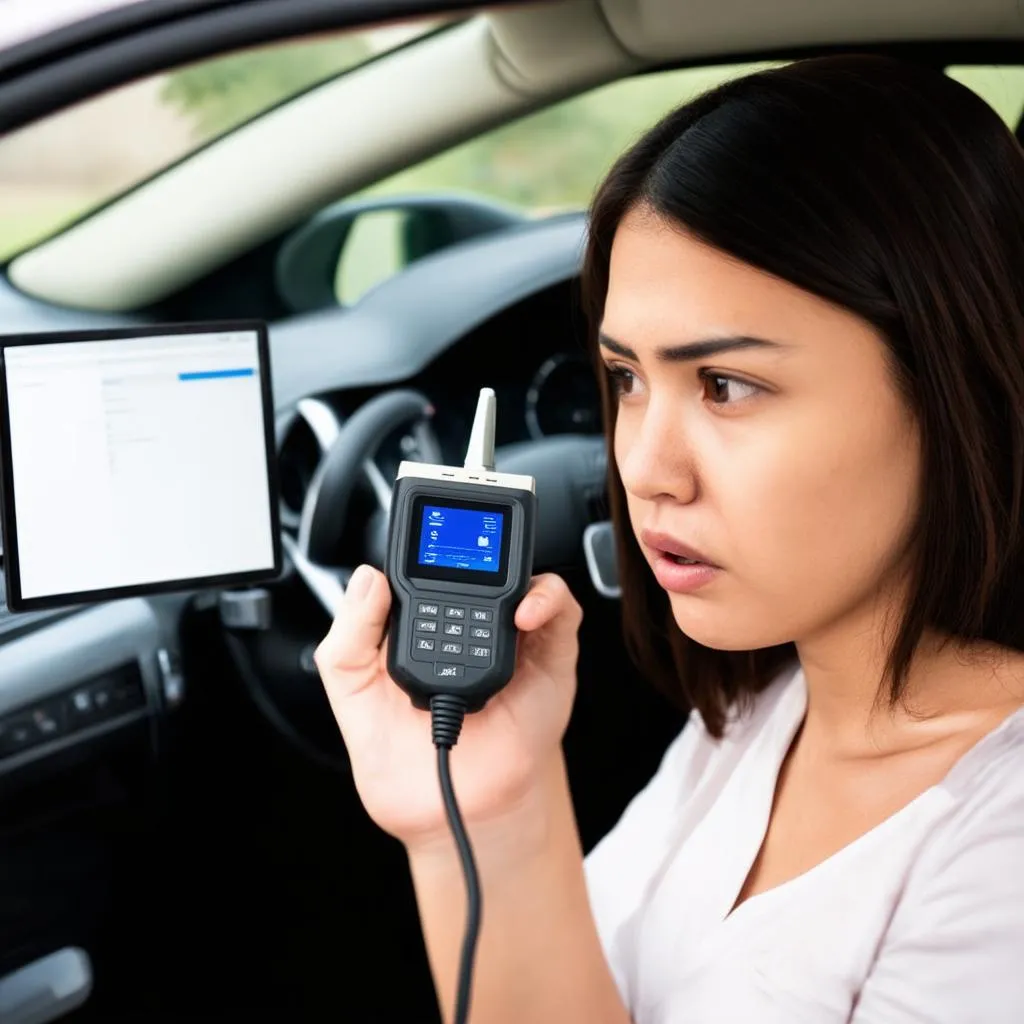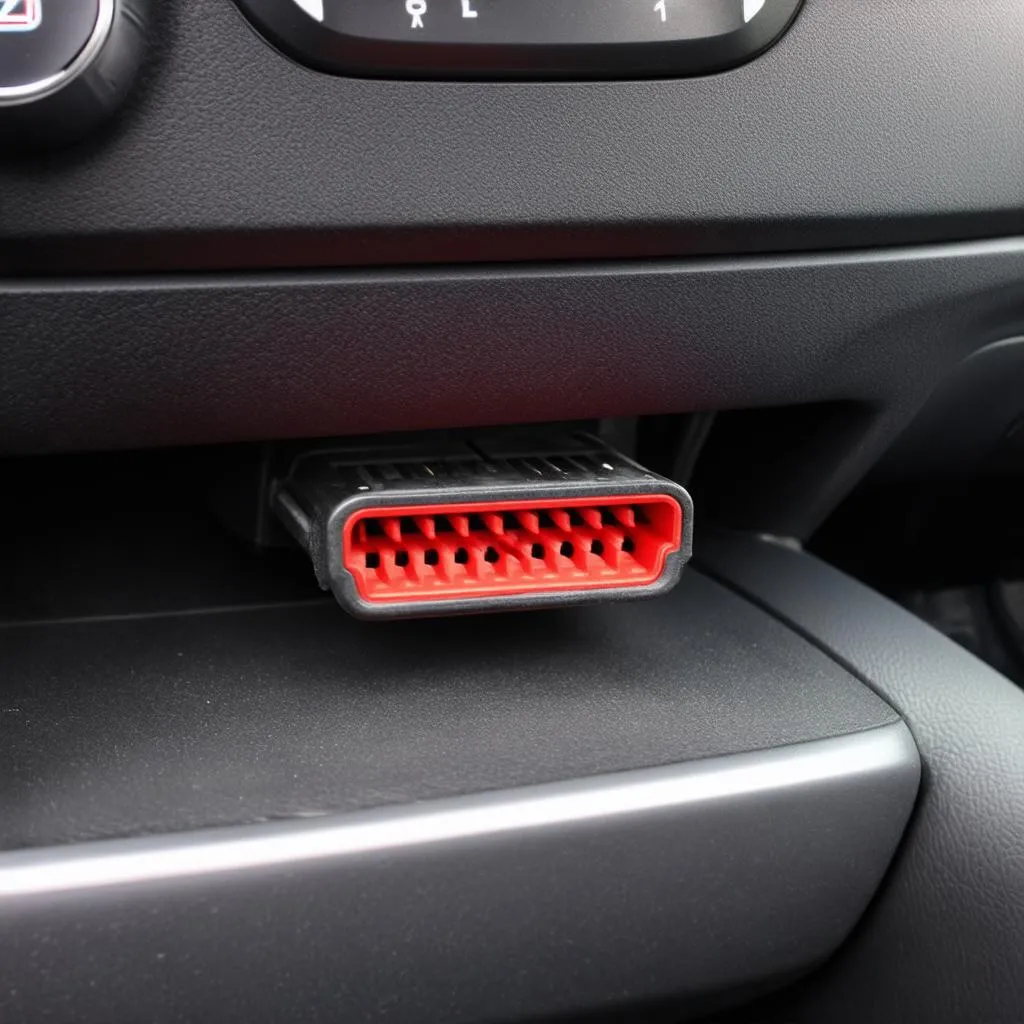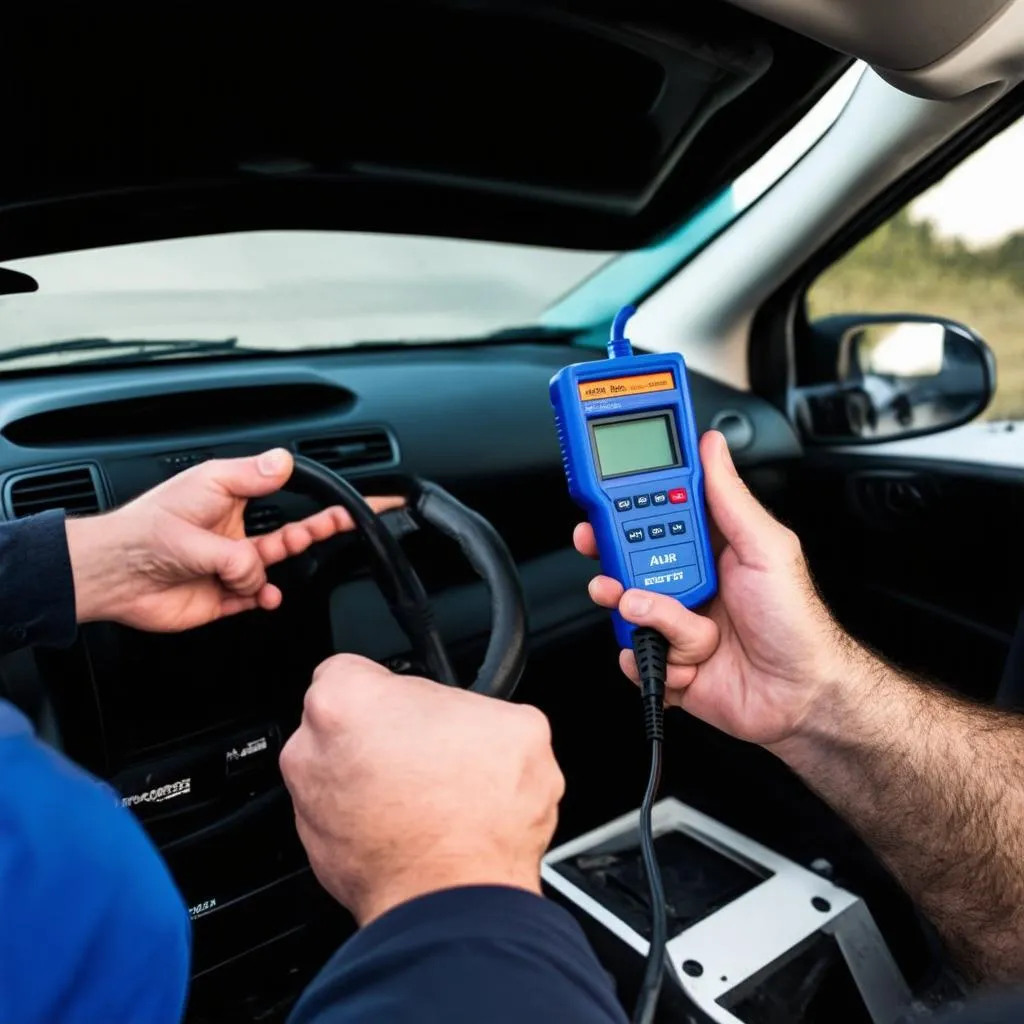You’re working on a car repair, and then boom – your OBD reader isn’t detected! It’s a common problem that can make you feel like you’re stuck in the middle of a car repair puzzle. Maybe you’re trying to check the engine codes or reset the service light, but your OBD reader just won’t connect.
Before diving into troubleshooting, let’s explore why this happens and what you can do about it.
Understanding the “No Obd Reader Detected” Problem
What is an OBD reader and why is it important?
An OBD (On-Board Diagnostics) reader is a tool that connects to a car’s computer system to access and interpret diagnostic information. Think of it as a translator between your car and your tech world. It allows you to read trouble codes, clear error messages, and monitor various vehicle parameters.
So what does “No Obd Reader Detected” mean?
It simply means your OBD reader isn’t communicating with your car’s computer. There could be a problem with the OBD reader, the car’s system, or even the connection between the two.
Common Causes of the Problem
1. The OBD Reader Itself:
- Faulty reader: Just like any tool, your OBD reader can malfunction. This might be due to a damaged cable, a faulty internal circuit, or even dead batteries (if you’re using a wireless reader).
- Incompatible reader: Some OBD readers are designed for specific car models or years. You might have the wrong reader for your car.
- Outdated firmware: Like your smartphone, OBD readers need updates too. If you haven’t updated the firmware recently, it might be preventing communication with your car.
2. The Car’s System:
- OBD port problem: The OBD port itself might be damaged or corroded, preventing a proper connection.
- Faulty wiring: The wiring connecting the OBD port to the car’s computer system might have a break or a short circuit, interrupting communication.
- Software issue: The car’s software might have a bug or glitch that is interfering with the OBD reader’s communication.
3. The Connection:
- Loose connection: The OBD reader isn’t securely plugged into the OBD port, causing a poor connection.
- Interference: Other electronic devices, like a mobile phone, might be causing electromagnetic interference that affects the connection.
Troubleshooting Steps:
1. The Easy Checks:
- Check the connection: Make sure the OBD reader is securely plugged into the OBD port. Give it a gentle wiggle to ensure a good connection.
- Check the reader: Try using the OBD reader on another vehicle to see if it works. If it does, the problem might be with your car’s system.
- Check for interference: Try disconnecting other electronic devices, like your phone, from the car to see if it improves the connection.
2. More Advanced Steps:
- Check the OBD port: Visually inspect the OBD port for any damage, corrosion, or loose connections. If you find any problems, try cleaning the port with a small brush and compressed air.
- Check the wiring: If the OBD port looks fine, there might be an issue with the wiring. You can use a multimeter to test the continuity of the wires connecting the port to the car’s computer system. However, this requires some electrical knowledge and can be dangerous.
- Update the OBD reader: If your OBD reader supports firmware updates, check for and install any available updates.
3. When in Doubt, Call a Professional:
If you’re still unable to resolve the issue, it’s best to seek professional help. A mechanic can diagnose the problem and make any necessary repairs, ensuring the safety and proper operation of your vehicle.
Some Things to Keep in Mind:
- The OBD port is usually located under the dashboard on the driver’s side. Check your owner’s manual for the exact location.
- The OBD reader should be compatible with your vehicle’s year and model. Some older cars might not have an OBD port, while some newer cars might require a specific type of reader.
- The “No Obd Reader Detected” message might be caused by a problem with the car’s computer system. If you’re experiencing other issues, such as a check engine light or erratic behavior, it’s a good idea to get your car inspected by a mechanic.
Frequently Asked Questions:
What are some other troubleshooting tips for “No Obd Reader Detected”?
- Try a different power source. If you’re using a wireless reader, make sure it has enough battery power.
- Check for software updates. Make sure your OBD reader has the latest software.
- Try a different OBD port. Some vehicles have multiple OBD ports.
Are there any specific OBD readers that work well with European cars?
- Yes, there are a few popular choices:
- Launch X431 Diagun: This is a popular choice for professional mechanics and DIY enthusiasts.
- Autel MaxiCOM MK808TS: This is another great option with a wide range of capabilities.
- OBDII Scanner ELM327: This is a more budget-friendly option that is still capable of performing basic diagnostics.
Can I use a generic OBD reader on my European car?
- It depends on the car model and year. Some European cars use a different protocol than standard OBDII. You may need a specific reader designed for European vehicles.
Where can I find more information about OBD diagnostics?
- Your car’s owner’s manual is a great place to start.
- There are many online resources available, such as automotive forums and websites.
- You can also ask a mechanic for advice.
Let’s Talk About Your Needs!
If you’re experiencing the “no OBD reader detected” problem, we’re here to help. Our team of experts can assist you with choosing the right OBD reader, troubleshooting issues, and providing expert advice on European car diagnostics. Contact us today via WhatsApp at +84767531508, we’re here to help 24/7!
 OBD reader not detected
OBD reader not detected
 OBD port location
OBD port location
 OBD reader compatible
OBD reader compatible
Conclusion:
The “no OBD reader detected” issue can be frustrating, but by following these troubleshooting steps, you can identify and resolve the problem. Remember, if you’re unsure about any of the steps, it’s always best to consult with a mechanic.
Let us know your thoughts in the comments below! If you found this article helpful, please share it with your friends and family. And don’t forget to check out our other articles on OBD diagnostics and car repair!